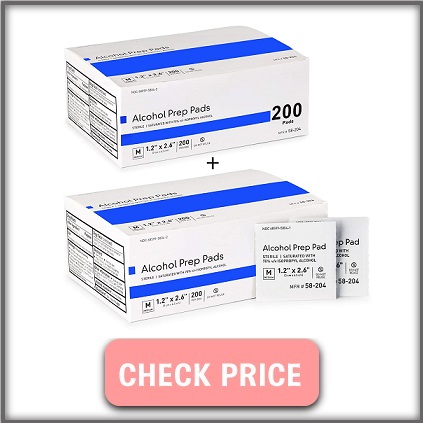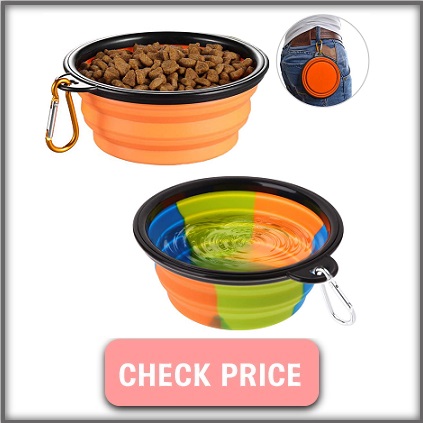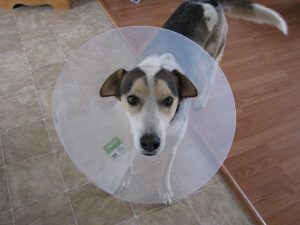All pets deserve to live their lives to their fullest. Just like the real human baby, they also have different diets and health needs than adults that should be addressed carefully.
While getting a puppy, kitten, or any other pet animal, you need to make sure you can easily fulfill their needs in terms of food, health, grooming, and emergencies. Of all of these, the ability to respond to emergencies and/or accidents is also very important.
What do we mean by emergencies and accidents? Any sort of emergency or an accident during camping or an in-house accident may turn into a serious issue. Along with that if you have two or more dogs in your home, they may try to do a WWE fight for fun that is not fun at all. Consumption of poisonous products is also among serious and common accidents.
In all such cases, you MUST contact/visit the vet or an Animal Poison Control Center in your area but what to do if it’s late at night, or a holiday, or the vet/animal poison control center is far away from your home? That is why you always need a special first aid kit for dogs (and other pets too) that could be used until you have access to the vet.
What Makes an Ideal Dog First Aid Kit?
Well, our experts went through many websites and forums to compile the final list of items that should be included in your dedicated first aid kit for dogs. You may also find the packages of first aid kits in the local stores or online but we found many important items missing in those kits. So, let’s find out below the must-have tools/items in your pet’s first aid kit.
Items to be included in the First Aid Kit for Dogs:
Contact details of your veterinarian and emergency veterinary clinics:
It’s important, very important! Your veterinarian already knows your dog(s) and all the good and bad about them. Secondly, you never know what the problem could be. So, whenever your dog meets a disaster, first contact your veterinarian. If the vet is unavailable, try to contact/visit emergency vet clinics. If your dog has consumed something poisonous, contact animal poison control asap.
We have observed many pet parents ask people on social media during their pet emergencies, that is not a good practice until you are on a reputable forum where vets are present to give their opinion/advice.
So, before you start collecting items for the first aid kit, make sure you have the phone numbers and addresses of the following.
- Your vet
- Emergency vet clinic
- The local animal poison control center
Blood clotting powder
It’s important to stop bleeding in the first instance if it is due to a minor or major injury. So, in such a case, the blood clotting powder is one of the important items that should be in your kit. Also known as coagulation, this miraculous powder forms a clot over the injury to reduce and stop the bleeding completely.
Styptic powder
Styptic powder is another substance that is used to stop bleeding in dogs but unlike the blood clotting powder, this one is for small injuries such as a broken nail or minor scratches. If the styptic powder is not available, you may also use corn starch or flour but it is better to have the styptic powder in your first aid kit.
Digital Thermometer
You may already have an idea that a digital thermometer is used to check your dog’s temperature. If you suspect that your pet has a low body temperature or fever, you should check by yourself. Also, remember that the normal body temperature of dogs and cats is 100 to 102.5°F. If you are wondering how to check your dog’s temperature, check out this video. Don’t forget to lubricate the thermometer before checking the dog’s temperature.
Disposable Gloves
In case of such scenarios, always wear gloves while handling injured pets. It is important not only for your dog but also for you. Disposable gloves keep you and your pet safe by preventing the spread of germs between both of you. The disposable gloves are usually made of latex and they work as a safety barrier between you and germs.
Gauze Pads
The gauze pads are effective in treating excessive bleeding from a severe injury because the use of the traditional bandage alone would not be enough to stop excessive bleeding. It works perfectly if used with medical tape. It is a must-have item in your kit because it is very important to control bleeding until you arrive at an animal clinic or your vet. Another wonderful use of gauze pads is that they can be used to clean wounds and apply ointments.
Adhesive Tape
An adhesive tape or bandage tape is a necessary item that should be available in your first aid kit. It is used to hold the bandages at several places such as the tail and paws. Alternatively, you can also use electrical tape or duct tape. But remember, don’t apply it too tightly or it may interfere with the normal blood flow. Also, make sure to tape only on the bandage and not on the dog’s skin otherwise it will be difficult and painful to remove it.
This waterproof tape by 3M is one of the best adhesive tapes that is being used in the hospital throughout the US. It is also selected as Amazon’s choice. You can purchase 1 roll or a pack of 6 rolls that saves you some bucks too.
Cotton balls or swabs
Hygiene is important because you never want your dog to catch some other disease while dealing with its injury. So, the cotton swabs help you clean the blood and dirt from the wound. Also, it can be used to apply wound disinfectant or ointment to the wound.
Scissors with the blunt end
The scissors can be used to cut and remove bandages or hair near the injury. The blunt-ended scissors are safer to use especially when you need to use them near the nose, eyes, or ears. So, the pair of blunt-ended or blunt-tipped scissors is a must-have item for your pet’s first aid kit.
Battery-powered Beard Trimmer
Using a beard trimmer to remove fur, hair, and mats around your dog’s wounds instead of scissors will decrease the chances of accidental cuts to your dog’s skin. A battery-powered or rechargeable beard trimmer can also help you remove sticky stuff such as glue and gum.
Ice Packs
Ice packs or cold packs can be used as a cold compress to control inflammation and swelling. It is usually used after your pet has been stung by a bee or wasp, got a minor injury, or has a sprain and strain.
Note: Don’t apply an ice pack directly to your dog’s skin as it may result in cold-induced skin damage. The best method is to wrap it in the towel and then apply it. If your dog has fur, you don’t need a towel.
Towel
A microfiber towel or blanket helps your dog to stay calm and peaceful after the injuries. Once you wrap a towel or blanket around your dog you’ll be able to access your dog’s injury without any hassle. Also, if the ground has rocks or is too hot for your dog, you can use it as a soft surface for your dog and can examine him easily. If the towel is not available, you may also use a small blanket.
Alcohol wipes
These wipes are multi-purpose. They can be used to clean off your dog’s muddy paws, and clean dirt or blood from a wound, ear, or eye. Remember, dirt and fecal matter may contain lots of dangerous parasites and/or bacteria that may result in an infection. So, alcohol wipes or grooming wipes should be an integral part of your first aid kit.
Wastage Bags or Poop Bags
A pack of poop bags must be included in the kit because a sick dog may give you a tough time on that. Make sure the wastage or poop bags are waterproof and easily usable. The following pack of poop bags can be a good fit for you as it is a pack of 900 having a dispenser and leash bag. You can keep 2-3 dozen bags in your first aid kit and may use the rest in your daily routine.
Tweezers and Tick Remover
Tweezers are handy when a sharp object such as a piece of glass lodged in your dog’s skin. You may not be able to remove such objects with a bare hand so tweezers are the best choice for their removal. The tweezers can also be used to remove ticks from your pet’s skin.
If your dog has got ticks, you may be needing to remove them using a tool like the one that is mentioned below because you can’t remove them with bare hands. Remember ticks can transmit several diseases to your dogs such as Rocky Mountain Spotted Fever and others so you should not take them easy. Before removing ticks, it is better to talk to your vet for a clearer picture.
Flashlight
The flashlight is a must not only for the nighttime but you may also need it to find any item you have dropped while giving first aid to your dog. Solar-powered lights are lights with rechargeable batteries are preferred here. Here, we recommend a head-worn light because you may be needing both hands to treat your dog and a handheld flashlight would be difficult to deal with.
Magnifying Glass
You may be wondering why a magnifying glass. Sometimes, you may need to deal with very tiny wounds or a piece of glass in your dog’s skin or anything that you could not be able to see with the naked eye. You may also need to deal with fleas and ticks that can be missed if you don’t have a magnifying glass. So, it is better to have a magnifying glass in your dog’s first aid kit for the safe side.
Pillbox for medicine
The pillbox is necessary to keep all the pills and other medicine safe and secure. It is important to handle and store the pills in such a way that no one can touch them with a bare hand. Make sure the pillbox is moisture-proof and has multiple large compartments so you can store multiple medications. The below-mentioned pillbox is one of the best pillboxes available on Amazon and is highly recommended.
Liquid Dishwashing Soap
Your dog may have dirt or any substance stuck in his fur or coat and you should clean them out using liquid dishwashing soap as it would not be easy to do it just with water. Liquid soap is also helpful in cleaning any toxic substances that are accidentally or unintentionally applied to your dog’s body.
What to do if my dog has consumed medicine or poison?
As soon as you are aware of the fact that your dog has eaten medicine in bulk or poison or any other item that is poisonous for dogs, contact the local animal poison control center and ask for their help. They’ll suggest the best treatment according to the situation and type/dosage of medicine/poison your dog has eaten.
Secondly, make sure you already have the following items in your first aid kit.
Fresh 3% Hydrogen Peroxide:
While in contact with the local animal poison control center, they’ll most probably ask you to induce vomiting as quickly as possible, and 3% Hydrogen Peroxide is the best product to induce vomiting. Remember, you must NOT induce vomiting until the animal poison control center asks you to do so. And make sure that the Hydrogen Peroxide is fresh and unexpired. If you already have had a Hydrogen Peroxide bottle for a long time, consider replacing it with the newer one.
Milk of Magnesia:
Milk of Magnesia helps absorb poison and can be an effective item if your dog has consumed poison. Alternatively, you can also use activated charcoal for such a purpose. Like Hydrogen Peroxide, Milk of Magnesia should also be used after consulting with the animal poison control center or your vet.
Medications:
If your dog is on medications or the vet has asked you to keep some specific medicine, make sure you keep all of them in your first aid box. Along with that, keep the following items for the safe side.
OTC Antibiotic Ointment
OTC (Over-The-Counter) Antibiotic Ointment is used to apply on wounds, injuries, or minor cuts before placing the bandage. It protects your pup against bacterial infections. Make sure you get a non-toxic Ointment or get the one we have mentioned below.
Artificial Tear Gel
Artificial tear gel is an eye lubricant that can be used to treat dry eye syndrome to reduce irritation. Along with that, this substance can be used to treat some other issues such as grass seed or if a foreign object is stuck in your dog’s eye. Also, an artificial tear gel would reduce discomfort if you have flushed your dog’s eyes.
Saline eye solution
A bottle of Saline eye solution is a must-have item as you can flush a wound using this solution. Before flushing the wound, clip the fur from around the wound so you can easily work out on it. It can also be used to flush out your dog’s eye.
Other necessary items to be included in the dog first aid kit
Collapsible Travel Food and Water Bowls
The collapsible or portable food and water bowls can be used for different purposes such as providing your dog with food and water, as well as, creating a mixture of disinfectants to clean your dog’s wound in case of emergency. If you use the bowl to make a disinfectant for your dog, clean and sterilize it properly before using it for drinking purposes.
Extra Leash and Collar
An extra leash and collar should also be included in your dog’s first aid kit. The leash may snap or the collar may come off during an emergency, so a water-resistant leash and collar will help you restrain your dog without any problem and lead him to safety. If you already have an old leash and collar then no need to buy the new one as you can recycle the older ones.
Toolbox
A toolbox is a need in every house and you may also be needing it in a pet emergency. If you don’t have one already, you can check this one. It is a 148-piece tool kit having a cordless screwdriver, nose pliers, wrench, mu;ti-purpose scissors, and other accessories.
A Comfort Item
Whatever your dog loves such as a toy or an item for distraction. It is really very important to keep your dog calm and comfortable while giving him first aid. Your old sweater or shirt may also be the best item to keep him calm.
Water And Small Packages of Food or Treats
Food and treats can also be used to distract him from the situation. Along with that, the availability of water is also important because it helps you to prevent dehydration in your dog, especially if you are going to the vet or hospital and it’s far from your home.
Wrapping it up:
So, friends, these were some must-have items that should be a part of the dedicated first aid kit for dogs. Disasters and accidents are just a step away from your lovely dog as they never know what’s bad for them.
If you want us to include any other item in this first aid kit, please let us know in the comments below.




































